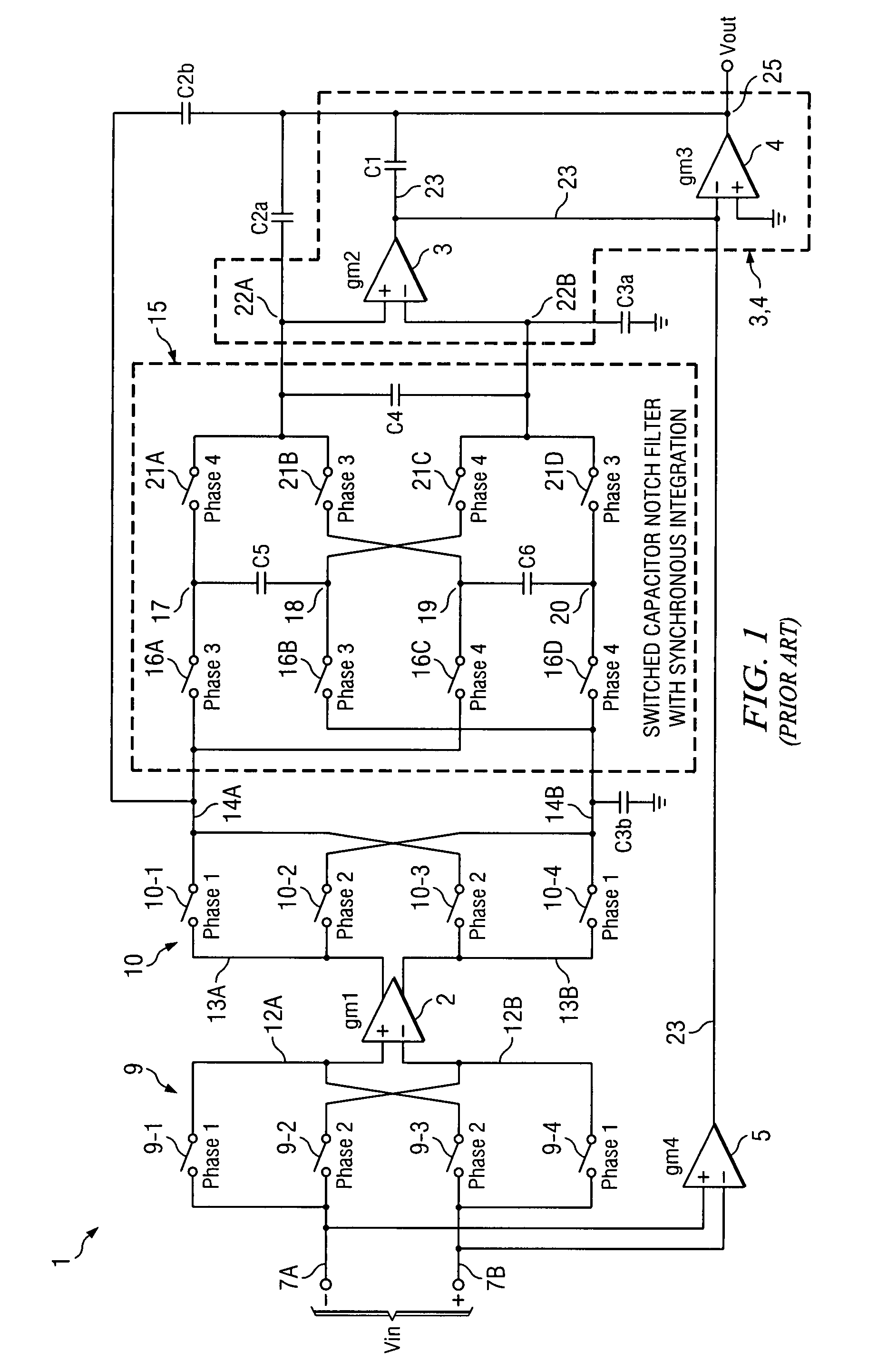Dual path chopper stabilized amplifier and method
a stabilized amplifier and dual-path technology, applied in the direction of pulse technique, amplifier with semiconductor devices/discharge tubes, electronic switching, etc., can solve the problems of low in-band noise, low ripple of chopper stabilized, and in-band noise of chopper stabilization, so as to avoid performance problems, improve stability, and stabilize low ripple chopper
- Summary
- Abstract
- Description
- Claims
- Application Information
AI Technical Summary
Benefits of technology
Problems solved by technology
Method used
Image
Examples
Embodiment Construction
[0037]The present invention provides a dual path chopper stabilized amplifier (or one having more than dual paths) that provides improved stability and at the same time preserves the good offset, drift, and low input bias current associated with chopper stabilized amplifier performance. For example, an additional chopping stage and an additional notch filter are added in parallel with the main chopping stage 9,10 and notch filter 15 in Prior Art FIG. 3.
[0038]Referring to FIG. 4, dual path chopper stabilized amplifier 100 includes the structure shown in Prior Art FIG. 3, which includes a first chopping / notch-filtering circuit 11A. The dual path chopper stabilized amplifier 100 further includes a second chopping / notch-filtering circuit 11B. Specifically, the first chopping / notch-filtering signal path 11A includes a first input chopping circuit 35, a first differential transconductance amplifier 2, a first output chopping circuit 40, and a first notch filter 15. The second chopping / not...
PUM
 Login to View More
Login to View More Abstract
Description
Claims
Application Information
 Login to View More
Login to View More - R&D
- Intellectual Property
- Life Sciences
- Materials
- Tech Scout
- Unparalleled Data Quality
- Higher Quality Content
- 60% Fewer Hallucinations
Browse by: Latest US Patents, China's latest patents, Technical Efficacy Thesaurus, Application Domain, Technology Topic, Popular Technical Reports.
© 2025 PatSnap. All rights reserved.Legal|Privacy policy|Modern Slavery Act Transparency Statement|Sitemap|About US| Contact US: help@patsnap.com



